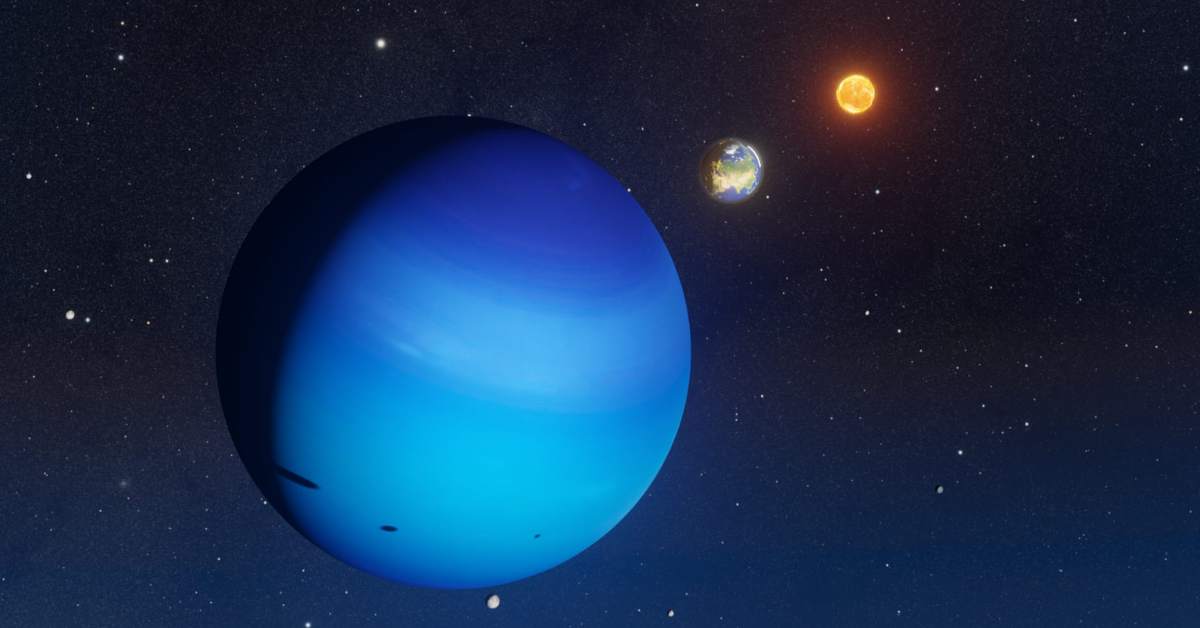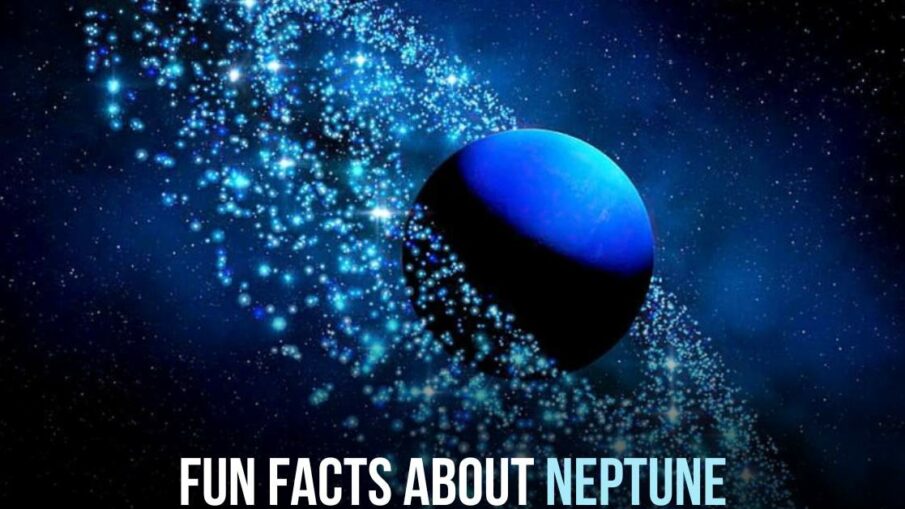In the mesmerizing tapestry of our Solar System, Neptune emerges as a jewel of celestial beauty, shrouded in enigma and intrigue. As the eighth planet from the Sun and the farthest major planet in our cosmic neighborhood, Neptune holds a unique position that beckons the imagination of astronomers, space enthusiasts, and curious minds alike.
Named after the Roman god of the sea, Neptune carries with it a rich tapestry of facts and mysteries that paint a captivating picture of this distant ice giant. Here, we embark on a comprehensive journey through the top 10 fascinating facts that illuminate the essence of Neptune and its cosmic significance.
1. The Culmination of Our Solar System

Neptune’s place as the seventh planet from the Sun designates it as the final major planet within our Solar System.
This distinction is a result of the reclassification of Pluto as a dwarf planet. Once considered the penultimate planet, Neptune now stands as the last sentinel of our cosmic neighborhood, a celestial borderland that marks the transition to the vast expanse of interstellar space.
2. Vast Distances and Cosmic Solitude
Neptune’s realm extends far beyond the familiar terrestrial and jovian realms. Positioned over 30 times farther from the Sun than Earth, Neptune’s colossal orbit spans an astounding distance of 4.4738 billion kilometers.
This immense gap between Neptune and its solar parent highlights the cosmic solitude that characterizes this ice giant, offering a glimpse into the scale and majesty of our Solar System’s outer reaches.
3. A Year of Unfathomable Duration
Time itself takes on a different dimension in the Neptunian realm. A single year on Neptune encompasses a staggering 164.81 Earth years.
This prolonged orbital period is a direct consequence of Neptune’s vast distance from the Sun, resulting in a leisurely journey around its fiery celestial beacon. The notion of celebrating one’s birthday only once in over 160 Earth years is a testament to the remarkable temporal disparities that govern the rhythms of our cosmic companions.
4. The Enigma of the Ice Giant
Neptune’s classification as an “ice giant” offers a glimpse into its intriguing composition. A dense amalgamation of “icy” materials, primarily composed of water, methane, and ammonia, forms the outer layers of this cosmic wonder. Beneath this gaseous shroud rests a small rocky core, a testament to the intricate interplay between elemental forces that shape celestial bodies.
5. Rings of Etherial Beauty
Among Neptune’s treasures lies a captivating ring system, adorned with at least five prominent rings and augmented by four additional ring arcs.
These exquisite structures, composed of dust and rock formations, are believed to have been sculpted by the gravitational interactions between Neptune and its entourage of moons. The rings’ ethereal allure underscores the delicate choreography of cosmic dance occurring within our Solar System.
6. The Disputed Legacy of Discovery
The unveiling of Neptune’s existence was shrouded in a captivating tale of rival mathematicians and astronomical foresight. Although Galileo’s sketches hinted at Neptune’s presence as a distant star, the mantle of discovery rests with two mathematicians: Urbain Le Verrier, a French savant, and John Couch Adams, an English luminary.
Their independent calculations and predictions laid the groundwork for Neptune’s eventual identification. The honor of the discovery itself was claimed by astronomer Johann Gottfried Galle in 1846. This chapter in scientific history remains a testament to the intricate interplay between calculation and observation.
7. Homage to the God of the Sea
Neptune’s appellation as the Roman god of the sea is a nod to its profound blue hue and the mysteries of the deep that it embodies. This name was championed by French mathematician Le Verrier, one of the minds behind Neptune’s discovery.
The association with the god of the sea offers a poetic link between the cosmic realms and the terrestrial oceans that have captivated humanity’s imagination for millennia.
8. Moonlit Companions in Cosmic Ballet
In its celestial journey, Neptune is accompanied by a retinue of 14 moons that populate its orbital realm. Among these lunar companions, Triton stands as the largest and most captivating.
Discovered a mere 17 days after Neptune’s identification, Triton’s unveiling was a remarkable feat of astronomical exploration. This period marked a momentous chapter in the history of scientific advancement, highlighting the boundless potential of human curiosity.
9. Uncharted Territories: The Neptunian Frontier
Humanity’s yearning to set foot on distant celestial bodies is tempered by the challenges presented by Neptune’s formidable distance and inhospitable conditions. To date, no human has embarked on a voyage to Neptune, with the Voyager 2 spacecraft being the sole emissary to explore its icy splendor.
This testament to human ingenuity and determination underscores the complexities of space travel and the profound depths that remain beyond our grasp.
10. The Azure Mystery: Neptune’s Chromatic Aura
One of Neptune’s most captivating attributes lies in its enchanting azure hue. This celestial cerulean is a product of its methane-rich composition, reflecting and refracting light in unique ways. The interplay between methane molecules and sunlight creates the ethereal blue palette that graces Neptune’s surface, offering a captivating visual spectacle against the cosmic backdrop.
In essence, Neptune beckons us to peer into the cosmic abyss, challenging us to comprehend the vastness and complexity of our Solar System.
From its enigmatic icy composition to its exquisite rings and moonlit companions, Neptune’s allure continues to unfold as a testament to the limitless wonders of the cosmos. As humanity’s exploration of the universe advances, Neptune stands as a reminder of the boundless horizons that await our discovery.
For those seeking to delve deeper into the cosmic realm, a plethora of curated content on Space and the Solar System awaits. Embark on an illuminating journey that encompasses the Sun, the Moon, Earth, Mercury, Venus, Mars, Jupiter, Saturn, Uranus, and the diminutive yet captivating dwarf planet Pluto.
Additionally, explore the captivating video content that unveils the awe-inspiring phenomena that grace our remarkable Solar System.
As our understanding of the cosmos expands, Neptune remains a beacon of celestial fascination, an embodiment of the wondrous mysteries that await our exploration. The journey into the cosmos continues, fueled by curiosity and guided by the brilliance of human endeavor.


Leave a Reply